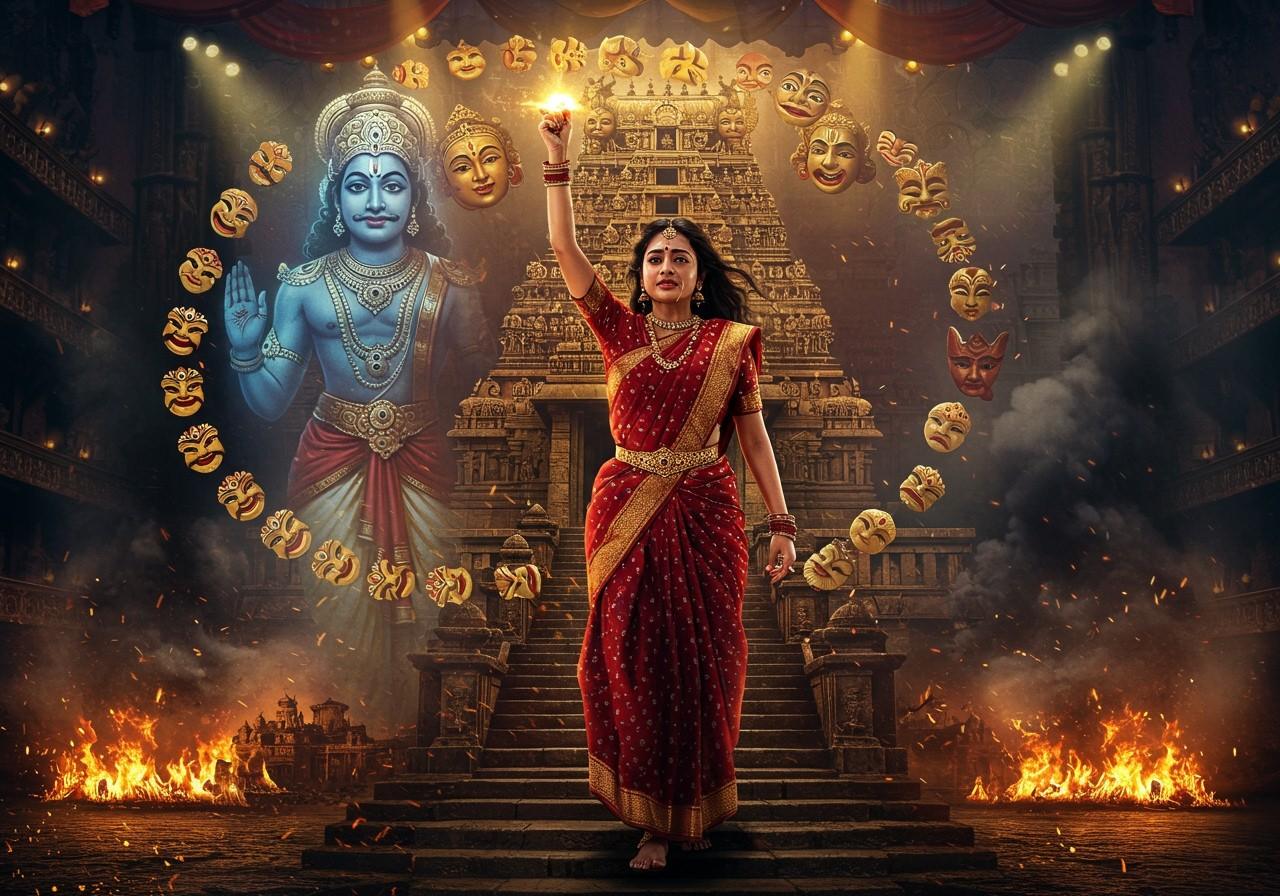
The epic saga of Kovalan and Kannagi, enshrined in the ancient Tamil classic ‘Silappatikaram,’ has profoundly shaped the cultural fabric of South India, particularly Tamil Nadu and Kerala. This narrative, believed to have existed as a folk tale before Ilango Adigal’s masterful rendition, has permeated various art forms, including literature, theater, and cinema. The dramatic intensity of their story, combined with its exploration of timeless themes, has ensured its enduring relevance across centuries.
Historical and Cultural Context
The ‘Silappatikaram’ is set against the backdrop of the ancient Tamil kingdoms—the Chera, Chola, and Pandya dynasties—a period marked by flourishing trade and vibrant cultural exchange. The influence of Jainism and Buddhism is evident in the societal values depicted in the epic. The narrative unfolds across significant urban centers like Puhar (Kaveripoompattinam), Madurai, and Vanji, each playing a crucial role in the story’s progression. The epic offers valuable insights into societal norms, gender roles, and the paramount importance of chastity in ancient Tamil society.
The Story of Kovalan and Kannagi
Kovalan, a prosperous merchant’s son, and Kannagi, his devoted wife, begin their married life in Puhar. Kovalan’s infatuation with the dancer Madhavi leads to his financial ruin and a tragic turn of events. The story reaches its climax with Kovalan’s wrongful execution in Madurai and Kannagi’s subsequent quest for justice. Her unwavering determination to prove her husband’s innocence and her fiery confrontation with the Pandya king transform her into a symbol of righteous indignation and female empowerment. The anklet (‘Silambu’), a pivotal element in the narrative, becomes a symbol of truth and justice. The story’s exploration of moral and ethical dilemmas continues to resonate with audiences today.
Literary Impact and Adaptations
‘Silappatikaram’ stands as a cornerstone of Tamil literature, significantly influencing the development of epic poetry and inspiring numerous literary works. The story of Kovalan and Kannagi has been reinterpreted and adapted in modern Tamil literature, showcasing its enduring appeal. Translations into other Indian languages have extended its reach and cultural impact beyond the Tamil-speaking world. The epic serves as a repository of Tamil cultural values, transmitting them across generations.
Theater and Performance Traditions
Kovalan and Kannagi’s story has found a vibrant expression in traditional Tamil theater forms such as ‘Koothu,’ ‘Nadagam,’ and ‘Therukoothu.’ These performances employ a captivating blend of dialogue, music, and dance to bring the epic to life. Contemporary adaptations continue to captivate audiences, ensuring the story’s continued relevance in popular culture. The use of visual storytelling techniques, elaborate costumes, and symbolic props enhances the emotional impact of these theatrical presentations.
Cinematic Representations
Tamil cinema has embraced the tragic tale of Kovalan and Kannagi, with notable films like the 1962 ‘Kannagi’ capturing the essence of the epic. Cinematic techniques, including screenplay, direction, and acting, bring new dimensions to the story. These films have influenced public perception of the characters and contributed to the story’s enduring presence in Tamil society. Memorable songs and musical compositions inspired by the epic enhance its artistic and cultural significance.
Cultural and Societal Influence
Kannagi’s transformation into a deity, revered and worshipped in temples across Tamil Nadu and Kerala, testifies to the profound impact of her story. The Kannagi Amman temples serve as focal points of devotion and cultural remembrance. The epic’s emphasis on justice, fidelity, and moral integrity continues to inform discussions on gender and social justice in contemporary society. The inclusion of the story in educational curricula highlights its enduring cultural and ethical significance.
How Poojn.in Supports Your Connection to Traditions
Poojn.in provides a curated selection of items to honor the cultural legacy of Kovalan and Kannagi within your home:
-
Brass Anklets (Silambu): Discover exquisitely crafted brass anklets, reminiscent of Kannagi’s symbolic anklet, available in various designs and sizes. These serve as a powerful reminder of her courage and unwavering pursuit of justice.
-
Traditional Oil Lamps (Vilakku): Illuminate your prayers with authentic Tamil Nadu style oil lamps, handcrafted with intricate details. These lamps create a sacred ambiance for daily rituals and spiritual practices.
-
Pure Camphor and Sambrani: Enhance your offerings with pure camphor and sambrani, known for their purifying properties. These traditional ingredients add a sacred dimension to your puja rituals.
These products are sourced responsibly, ensuring quality and authenticity. Visit www.poojn.in for our complete collection and experience the convenience of secure online shopping with pan-India delivery.
Conclusion
The story of Kovalan and Kannagi, as told in ‘Silappatikaram,’ transcends its historical context to remain a vibrant part of Tamil culture. Their journey resonates with themes of love, loss, betrayal, and justice, offering enduring lessons for contemporary society. By continuing to engage with this timeless epic, we ensure the preservation of a rich cultural heritage and the transmission of invaluable values across generations.


